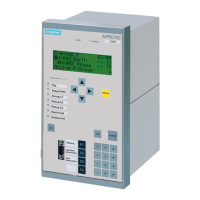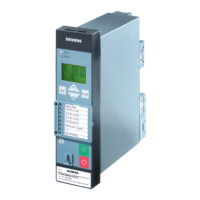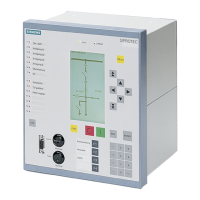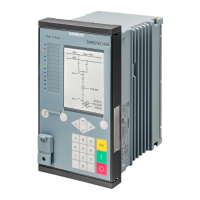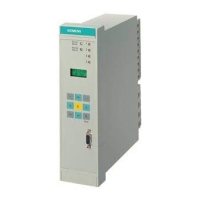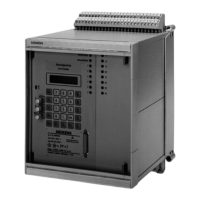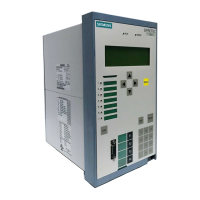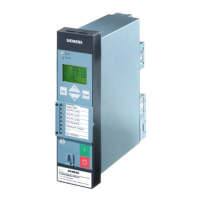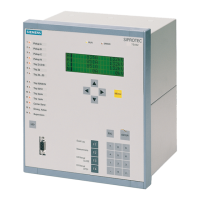2 Functions
30
7SD610 Manual
C53000-G1176-C145-4
overcurrent stages are identical. The characteristics are shown in the Technical Data
(Section 4.6). You can also disable the time overcurrent protection (Disabled).
If the device features an automatic reclosing function, address 133 and 134 are of im-
portance. Automatic reclosure is only permitted for overhead lines. It must not be used
in any other case. If the protected object consists of a combination of overhead lines
and other equipment (e.g. overhead line in unit with a transformer or overhead line/ca-
ble), reclosure is only permissible if it can be ensured that it can only take place in the
event of a fault on the overhead line. If no automatic reclosing function is desired for
the feeder at which 7SD610 operates, or if an external device is used for reclosure,
set address 133 Auto Reclose to Disabled.
In the address mentioned the number of desired reclosure cycles is set. You can select
1 AR-cycle to 8 AR-cycles. You can also set ASP (adaptive dead times); in this
case the behaviour of the automatic reclosure function is determined by the cycles of
the remote end. However, at one end of the line the number of cycles must be config-
ured. This end must provide an infeed. The other end can then operate with adaptive
dead time. See Subsection 2.10 for detailed information.
The AR control mode at address 134 allows a total of four options. On the one
hand, it can be determined whether the auto reclose cycles are carried out according
to the fault type detected by the pickup of the starting protective function(s) (only for
three-pole tripping) or according to the type of trip command. On the other hand, the
automatic reclosure function can be operated with or without action time.
The setting Trip with T-action / Trip without T-action ... (default
setting = With trip command ... ) is to be preferred if single-pole
or single-pole/three-
pole auto reclose cycles are provided for and possible. In this case, different dead
times (for every AR cycle) are possible after single-pole tripping and after three-pole
tripping. The protective function that issues the trip command determines the type of
trip: Single-pole or three-pole. The dead time is controlled dependent on this.
The setting Pickup with T-action / Pickup without T-action ...
(Pickup with T-action ...) is only possible and visible if only three-pole tripping is de-
sired. This is the case when either the ordering number of the device model indicates
that it is only suited for three-pole tripping, or when only three-pole tripping is config-
ured (address 110 Trip mode = 3pole only, see above). In this case you can set
different dead times for the auto reclose cycles following 1
-, 2- and 3-phase faults. De-
cisive here is the pickup situation of the protection functions at the instant the trip
command disappears. This mode also enables to make the dead times dependent on
the type of fault in the case of three-pole reclosure cycles. The tripping is always three-
pole.
The setting Trip with T-action provides an action time for each reclose cycle.
The action time is started by a general pickup of all protective functions. If no trip
command is present before the action time expires, the corresponding reclose cycle
is not carried out. Section 2.10 provides detailed information on this topic. This setting
is recommended for time-graded protection. If the protection function which is to
operate with automatic reclosure does not have a general pickup signal for starting the
action times, select ... Trip without T-action.
Address 137 U/O VOLTAGE allows to activate the voltage protection function with a
variety of undervoltage and overvoltage protection stages. In particular, the overvolt-
age protection with the positive sequence system of the measuring voltages provides
the option to calculate the voltage at the other, remote line end via integrated com-
pounding. This is particularly useful for long transmission lines where no-load or low-
load conditions prevail and an overvoltage at the other line end (Ferranti effect) is to
cause tripping of the local circuit breaker. In this case set address 137 U/O VOLTAGE
www . ElectricalPartManuals . com
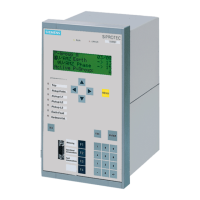
